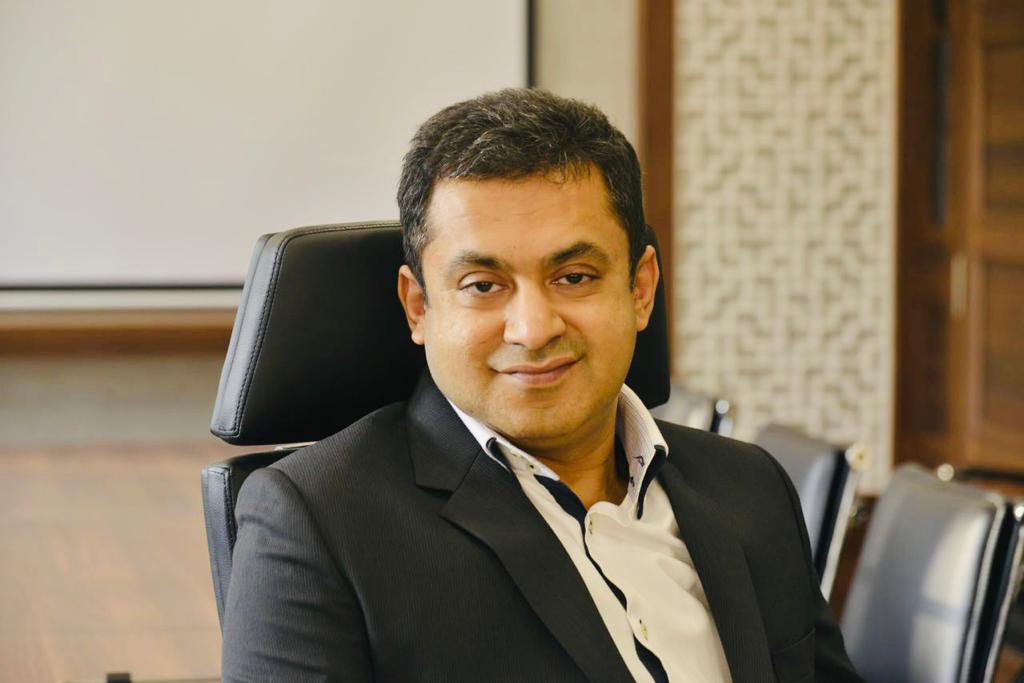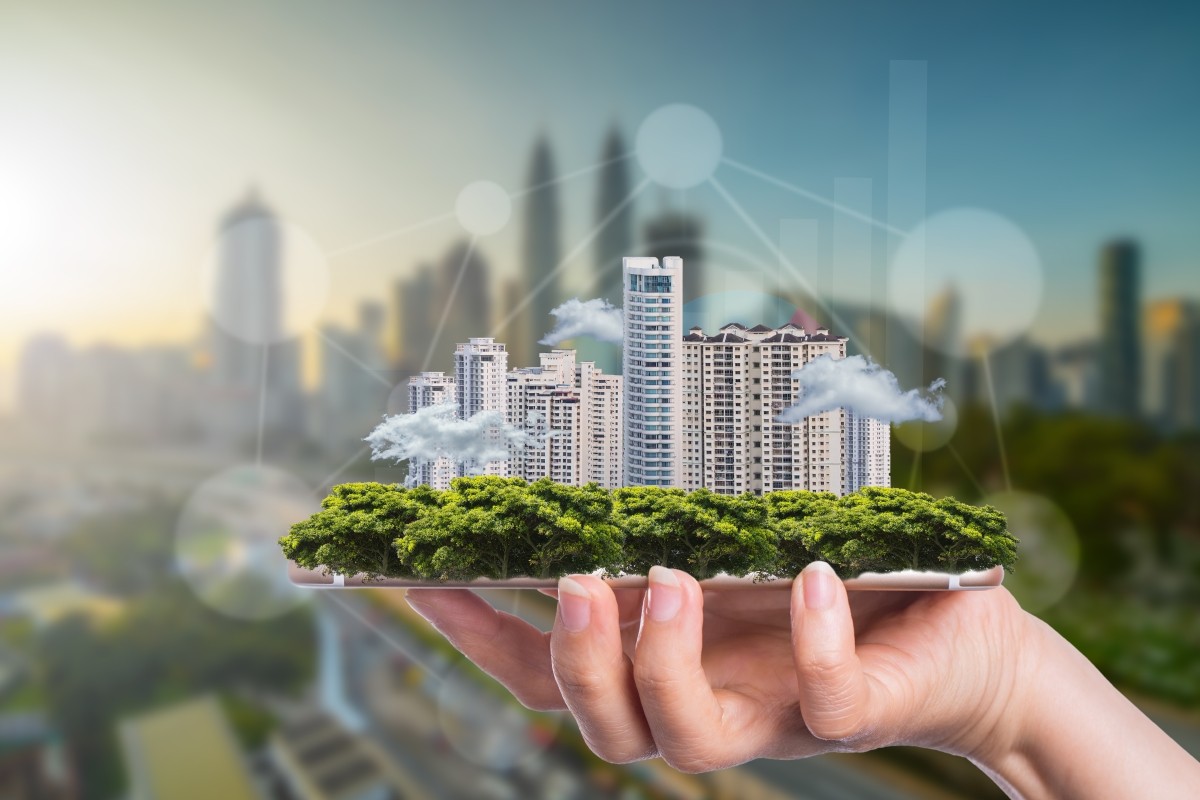CIDCO Spearheads Water Sensitive Urban Design (WSUD) in Navi Mumbai
In conversation with Dr. Mukherjee

Dr. Sanjay Mukherjee, IAS
Vice Chairman and Managing Director,
City and Industrial Development Corporation of Maharashtra CIDCO, Maharashtra
Water Sensitive Urban Design is an integral part of the Smart City Mission. Water supply infrastructure with available resources, terrain and sustainable green initiative to supply and distribution of water to urban areas, recycle and reuse with zero discharge policy is the need of the hour. Dr. Sanjay Mukherjee, IAS, Vice Chairman and Managing Director,City and Industrial Development Corporation of Maharashtra CIDCO, Maharashtra, told Water Digest about how his company is ensuring this under Smart City Mission.
Water Digest (WD): The construction industry is promoting projects related to Green Infrastructure. How can this method be used to make a city more water positive in nature in terms of water usage/ water footprint?
Sanjay Mukherjee (SM): The construction industry is driven by available natural resources. But the pace of development and limitation of natural resources is forcing it to adapt sustainable growth with minimum wastage and maximum utilisation of natural resources. Water is the most essential basic requirement of a human being. By adopting Green Revolution, water resources will be utilised to all possible extent with zero discharge mission to sustain the future demand and growth with optimum utilisation of naturally available sources.
WD: Navi Mumbai gets flooded every monsoon. Where are the gaps? What is lacking?
SM: Every region experiences waterlogging to some extent in monsoon due to heavy rainfall. Taking this into account, CIDCO has planned and undertaken various initiatives to prevent the flood-like situation in the city. Utmost care has been taken while planning the development of the city. It is the only city in India with a separate storm water disposal and waste water disposal system. A well-planned drainage system and holding ponds for tidal water have been developed for prevention of flooding in monsoon. All drains are desilted and cleaned before the arrival of monsoon.
WD: How is CIDCO implementing Water Sensitive Urban Design?
SM: CIDCO has taken an initiative to minimise the use of power consumption in their urban design to get maximum carbon credit. This can be achieved by systematic planning and design of water supply infrastructure with available resources, terrain and sustainable green initiative to supply and distribution of water to urban areas and also initiated to recycle and reuse with zero discharge policy. This will benefit most of the urban water supply requirement of future.
WD: How have cities in Maharashtra benefited from the Smart City Mission?
SM: CIDCO has developed a smart city in the form of Navi Mumbai among 10 smart cities proposed in Maharashtra. Smart city basically consists of well-planned exquisite infrastructural facilities, excellent transit system, affordable housing, serene environment with modern information and communication technologies. Navi Mumbai is flush with all these factors. It also comprises smart organisation, transparency and ease of doing business through e-governance, environmental sustainability, new technology for waste management, urban renewal, and development of gardens and play grounds. Investment and economic growth have been driven in the city through development of various ambitious projects and business centre by CIDCO.
Thus, Navi Mumbai is an environmentally and financially sustainable city providing quality lifestyle to its citizens. The city has been contributing massively in the economic growth and goodwill of Maharashtra.
WD: CIDCO is committed to plan and develop urban settlements self-sufficient with physical and social infrastructure that could meet all the needs of the population. What are the new strategies being planned to achieve these goals? Are there any upcoming projects that CIDCO is undertaking?
SM: The land development model of New Town development adopted by CIDCO for the Navi Mumbai project is a unique one where the land has been used as a resource and the entire city has been developed with physical and social infrastructure to make the city liveable and affordable. The city has been made self-sufficient in potable water by creating captive dams.
The provision of mass rapid transport system (sub urban rail system) has been brought by CIDCO to bring in affordable transportation system by using land as a resource. Cross subsidisation of land provided subsidised lands to various social organisations to bring in quality educational, medical and social facility plots.
A well-planned network of storm water drains and holding ponds to hold water during high intensity rains matching with high tide ensure minimal quarrying of adjacent hills. Aerial seeding on hill slopes ensures more tree coverage. Hills slopes have been given for protection and maintenance to corporates who are into medicinal plants. In 1970, while preparing development plans, inter tidal areas were kept as “No development zone” well before MoEF came up with coastal regulation zones in 1991.
New strategies for new urban settlement:
Navi Mumbai Airport-Influenced Notified Area (NAINA), spread over174 sq. km is an upcoming urban development project undertaken up by CIDCO. Here again, a unique development model has been adopted unlike Navi Mumbai project which has been fully acquired.
Here, land owners are made partners in development by giving them developed lands to the extent of 40% of their original lands. The remaining 60% percent is used for creating physical and social infrastructure with minimum land used for commercial utilisation for raising finance for the development of infrastructure.
Pockets of forest lands within the project are strengthened by adding more green space to encourage urban forestry. Land pooling schemes called Town Planning schemes have been adopted to bring in last mile infrastructure connectivity to all land parcels, at the same time making the urban area well planned with strong physical and social infrastructure connectivity. There is a three-tier consultative mechanism to bring land owners into the development fold without resorting to compulsory land acquisition model.
WD: Would you like to give any message to our readers?
SM: Water is a vital need of every human and its scarcity is an alarming issue. With increasing modernisation, it has become necessary to adapt modern techniques for water utilisation and management. We need to focus on recycling and reusing water for non-drinking purpose. It will reduce the uncontrolled usage of potable water. Development along with conserving natural resources will lead to a sustainable life.




